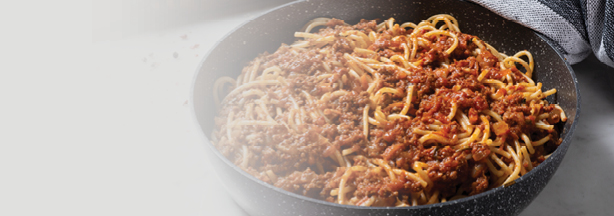30+ Healthy Low Potassium Farmer’s Market Food Finds for Kidney Diets
Whether you’re avoiding high-potassium foods or adding potassium-rich foods, the farmer’s market offers some good foods to eat for kidney health. Farmer’s market foods are also eco-friendly and typically less expensive.
While you’re at the farmer’s market (search Local Harvest to find one near you), remember the following information about potassium so you can make the best choices for your diet.
Low potassium selections
The low potassium fruits and vegetables in this list (below 200 mg/serving) are healthy choices, especially for people on hemodialysis who need to avoid high potassium levels. Patients with chronic kidney disease (CKD) but not on dialysis may have normal or low potassium levels and don’t require potassium restriction if their lab values are normal on an unrestricted potassium diet.
Low potassium fruits:
Apples
| Portion | Potassium amount |
|---|---|
|
1 medium with peel/3 per pound |
160 mg |
Apricots
| Portion | Potassium amount |
|---|---|
|
2 medium with peel/12 per pound |
185 mg |
Blackberries
| Portion | Potassium amount |
|---|---|
|
1/2 cup |
120 mg |
|
1 pint |
460 mg |
Blueberries
| Portion | Potassium amount |
|---|---|
|
1/2 cup |
60 mg |
|
1 pint |
225 mg |
Cherries, sweet
| Portion | Potassium amount |
|---|---|
|
1/2 cup |
160 mg |
|
1 pint |
630 mg |
Grapefruit
| Portion | Potassium amount |
|---|---|
|
1/2 medium |
180 mg |
|
1 whole |
360 mg |
Grapes
| Portion | Potassium amount |
|---|---|
|
20 average-size grapes |
190 mg |
Peach
| Portion | Potassium amount |
|---|---|
|
1 medium |
170 mg |
Asian Pear
|
Portion |
Potassium amount |
|
1 medium |
150 mg |
Plum
| Portion | Potassium amount |
|---|---|
|
1 medium |
105 mg |
Raspberries
| Portion | Potassium amount |
|---|---|
|
1/2 cup |
95 mg |
|
1 pint |
365 mg |
Rhubarb
| Portion | Potassium amount |
|---|---|
|
1/2 cup |
175 mg |
|
1 stalk |
150 mg |
Strawberries
| Portion | Potassium amount |
|---|---|
|
6 medium, 1/2 cup |
110 mg |
|
1 pint |
445 mg |
Watermelon
| Portion | Potassium amount |
|---|---|
|
1 cup |
180 mg |
|
1 slice (10" x 1") |
480 mg |
Low-potassium vegetables:
Asparagus
| Portion | Potassium amount |
|---|---|
|
6 medium spears |
190 mg |
Broccoli
| Portion | Potassium amount |
|---|---|
|
1/2 cup flower clusters |
115 mg |
|
1 bunch |
370 mg |
Cabbage
| Portion | Potassium amount |
|---|---|
|
1/2 cup, raw |
85 mg |
|
1 head |
2,200 mg |
Carrots
| Portion | Potassium amount |
|---|---|
|
1/2 cup, raw |
180 mg |
|
1 medium |
230 mg |
Cauliflower
| Portion | Potassium amount |
|---|---|
|
1/2 cup, raw |
150 mg |
Celery
| Portion | Potassium amount |
|---|---|
|
1 rib |
105 mg |
Corn
| Portion | Potassium amount |
|---|---|
|
1 small ear |
195 mg |
|
1 medium ear |
245 mg |
Cucumbers
| Portion | Potassium amount |
|---|---|
|
1/2 cup |
75 mg |
|
1 cucumber |
440 mg |
Eggplant
| Portion | Potassium amount |
|---|---|
|
1/2 cup |
95 mg |
Green Beans
| Portion | Potassium amount |
|---|---|
|
1/2 cup |
115 mg |
Mushrooms, white
| Portion | Potassium amount |
|---|---|
|
1/2 cup |
150 mg |
Okra
| Portion | Potassium amount |
|---|---|
|
1/2 cup |
150 mg |
Onion
| Portion | Potassium amount |
|---|---|
|
1 medium |
160 mg |
Peas, green
| Portion | Potassium amount |
|---|---|
|
1/2 cup, cooked |
175 mg |
Radish, red
| Portion | Potassium amount |
|---|---|
|
1 medium |
10 mg |
Scallion, bulb and tops
| Portion | Potassium amount |
|---|---|
|
1 medium |
40 mg |
Squash, crookneck
| Portion | Potassium amount |
|---|---|
|
1/2 cup |
140 mg |
Squash, zucchini
| Portion | Potassium amount |
|---|---|
|
1/2 cup |
150 mg |
Turnips
| Portion | Potassium amount |
|---|---|
|
1/2 cup |
140 mg |
Turnip Greens
| Portion | Potassium amount |
|---|---|
|
1/2 cup, cooked, drained |
150 mg |
High-potassium fruits and vegetables
The high potassium fruits and vegetables (over 200 mg/serving) in the list below may need to be limited if you are on a low-potassium diet. However, it’s possible to plan small amounts of some of these foods and still stay within your daily target for potassium. Portion size and frequency are important considerations.
If you’re on peritoneal dialysis (PD you may need to add high potassium foods to avoid potassium depletion. If you’re on home hemodialysis (HHD) or nocturnal dialysis you may find your kidney diet is more liberal in potassium since the treatment provides more dialysis than traditional in-center hemodialysis. People in early stages of CKD usually don’t require a potassium restriction unless blood levels are above normal.
High-potassium fruits:
Avocado
| Portion | Potassium amount |
|---|---|
|
1 whole |
975 mg |
Cantaloupe
| Portion | Potassium amount |
|---|---|
|
1 cup |
495 mg |
Honeydew
| Portion | Potassium amount |
|---|---|
|
1 cup |
460 mg |
Nectarine
| Portion | Potassium amount |
|---|---|
|
1 medium |
290 mg |
Orange
| Portion | Potassium amount |
|---|---|
|
1 medium |
240 mg |
Pear
| Portion | Potassium amount |
|---|---|
|
1 medium |
210 mg |
High-potassium vegetables:
Artichoke
| Portion | Potassium amount |
|---|---|
|
1 whole, boiled |
425 mg |
Beets
| Portion | Potassium amount |
|---|---|
|
1/2 cup, cooked |
260 mg |
Brussels Sprouts
| Portion | Potassium amount |
|---|---|
|
1/2 cup fresh, boiled |
247 mg |
Lima Beans (butter beans)
| Portion | Potassium amount |
|---|---|
|
1/2 cup |
450 mg |
Mushroom, portabella
| Portion | Potassium amount |
|---|---|
|
1 whole |
300 mg |
Potato, russet
| Portion | Potassium amount |
|---|---|
|
1 medium |
950 mg |
Potato, red skin
| Portion | Potassium amount |
|---|---|
|
1 small |
750 mg |
Pumpkin
| Portion | Potassium amount |
|---|---|
|
1/2 cup |
465 mg |
Some vegetables, like potatoes, can be double-boiled or soaked to reduce potassium. The above food lists don’t include high-potassium fruits like banana, kiwi or mango or high-potassium vegetables like bitter melon, bamboo shoots or taro, as these are imported from other countries. Ask your renal dietitian for additional information on potassium sources in the kidney diet.
Related articles on DaVita.com

Download
Cookbooks
Access free kidney-friendly cookbooks from DaVita dietitians.
1,000,000+ Enjoyed So Far!

Eating Out
Guides
See kidney-friendly food and drink choices to consider when eating out at your favorite restaurants. Choose from 12 cuisine types.
